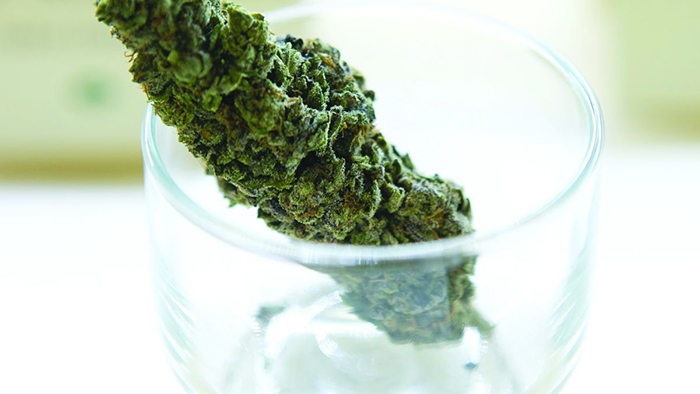In the 1970s and 1980s, the federal government sprayed cannabis with paraquat, knowing that it might injure or kill pot consumers
The story of paraquat, widely (and officially) considered to be the deadliest herbicide on the market, is in many ways a familiar one. Like the better-known glyphosate (the basis of the infamous, Monsanto-developed Roundup product), it was developed to help enable no-till farming (and to make its owners lots of money).
And as with tobacco and fossil fuels, the public has learned in recent years that paraquat’s marketers secretly knew decades ago that their product posed serious health hazards that exposed the companies to potentially debilitating lawsuits. And now, those lawsuits have finally come.
But there’s another part of the paraquat story that a lot of people, particularly younger ones, might not know about: In the 1970s and 1980s, the federal government sprayed cannabis with paraquat, knowing that it might injure or kill pot consumers. Many critics accused the government of trying to straight-up murder cannabis users. And though murderous intent was never explicitly established, it was clear that the drug warriors of the time didn’t seem to care one way or the other whether their purported plant-eradication programs were hurting people.
The weedkiller was in the news a lot back then. High Times magazine and other publications ran investigative stories uncovering the programs, which made it to the evening news on a fairly regular basis.
The first eradication program began during the administration of President Richard Nixon in 1975 as part of “Operation Clearview,” which provided $15 million to the government of Mexico to spray cannabis and poppy fields with herbicides. The feds lent logistical support, personnel and helicopters to the Mexicans, who actually carried out the operations. It’s impossible to know how much cannabis was actually killed on the Mexican farms. But it’s known that many farmers, who tended to be poor and also in the thrall of violent, powerful smugglers, harvested and sold a lot of tainted weed.
Oddly, the program continued into the administration of Jimmy Carter, even though the president himself was vociferously in favor of decriminalizing weed. In the late 1970s, as stories about the programs began to emerge, Joseph Califano, then the secretary of health and human services, announced that testing had determined that heavy smokers of paraquat-containing pot could suffer permanent lung damage, and that all pot users were at risk of damage that was at least “clinically measurable.”
Given that the late 1970s was the peak era of cannabis use in the United States, that’s a lot of people. We still don’t know how much damage was actually done, though, because the question hasn’t been studied a lot.
The paraquat program caused panic among pot smokers. Anywhere from 10 to 30% of Mexico-grown pot in the United States tested positive for the substance, according to estimates of the time. Mexico was then the largest source of cannabis used in the United States. Because paraquat is tasteless, odorless and invisible on plants, there was no way to tell whether a given bag of weed was tainted. Hucksters popped up selling “testing kits,” most of which were of no use.
The government declared that cannabis users were at no risk, even though testing had determined that paraquat, when combusted, caused major damage to the lungs of lab rats. That, the government’s drug warriors declared, didn’t mean that it could also hurt people.
In 1978, NORML filed a lawsuit seeking an end to the program, at least until research was done to determine paraquat’s health and environmental effects. The government relented—for a time. In 1983, the Reagan administration started spraying cannabis fields again, this time both in Mexico and in the United States. More lawsuits were filed and the practice was ended, only to be started up again briefly in the late 1980s.
By the ’90s, the government had given up on the practice entirely, but paraquat is still one of the most-used herbicides on American farms. More than 3,000 farmers who have Parkinson’s disease, which they believe was caused by paraquat, have filed lawsuits, most of which have been consolidated into class actions. The targets of the lawsuits are Syngenta, which makes paraquat, and Chevron, which markets it. The first trial will begin in October.
The lawsuits, however, won’t address the government’s years-long, indiscriminate use of paraquat as a weapon in the war on drugs. As the Washington Post put it in 1978, “The irony is simply this: The government that failed over many decades to convince the public that marijuana is dangerous finally has helped to make it dangerous.”








